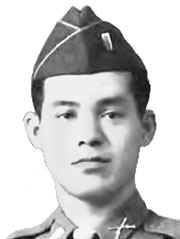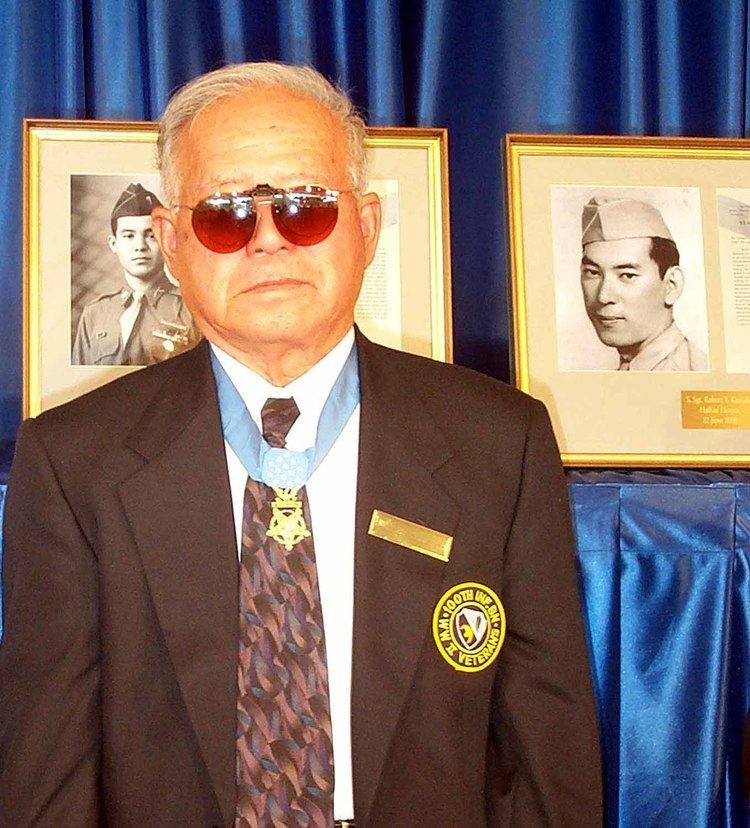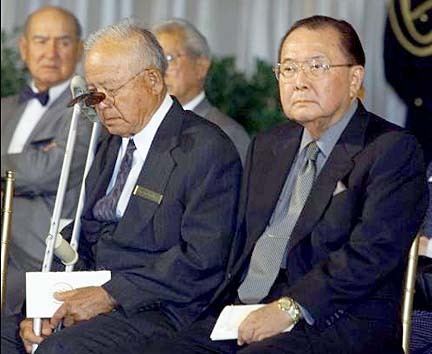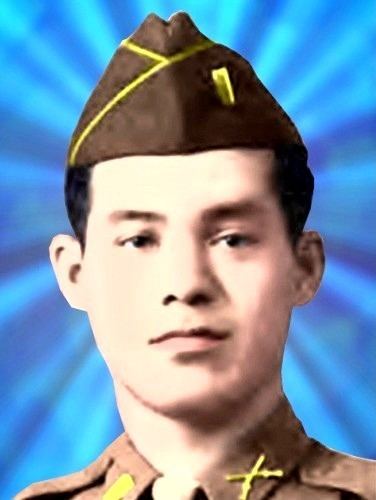Years of service 1941–1945 Name Yeiki Kobashigawa Other work Maintenance mechanic | Rank Second Lieutenant | |
 | ||
Born September 28, 1917Hilo, Hawaii ( 1917-09-28 ) Awards Medal of HonorPurple Heart Oak Leaf Cluster Bronze Star Similar People Shinyei Nakamine, Barney F Hajiro, Kaoru Moto, Francis B Wai, Stanley Armour Dunham | ||
Allegiance United States of America | ||
Yeiki Kobashigawa (September 28, 1917 – March 31, 2005) was a soldier in United States Army. He is best known for receiving the Medal of Honor in World War II.
Contents

Early life

Kobashigawa was born at Hilo, Hawaii. He is the son of immigrants who were born in Okinawa, Japan. He is a Nisei, which means that he is a second generation Japanese-American.
Soldier

One month before the Japanese attack on Pearl Harbor, Kobashigawa joined the US Army in November 1941.

Kobashigawa volunteered to join the all-Nisei 100th Infantry Battalion. This army unit was mostly made up of Japanese Americans from Hawaii and the mainland.

For his actions in June 1944, Kobashigawa was awarded the Distinguished Service Cross. He led his squad in destroying several German machine gun nests. This was eventually upgraded to the Medal of Honor upon military review on June 21, 2000. The review examined whether or not Asian Americans who fought in uniform during the war were treated unfairly due to prejudice. Twenty-two Americans of Asian ancestry who had fought in World War II were awarded the Medal after the review. Kobashigawa was one of only a handful still alive in 2000 to receive the Medal during a White House ceremony. After the war, Kobashigawa worked as a maintenance mechanic.

He died March 31, 2005 and is buried in National Memorial Cemetery of the Pacific, Honolulu, Hawaii. His grave can be found in the Columbarium Section CT8-E, Row 500, Site 536.
Medal of Honor citation

Citation:

Technical Sergeant Yeiki Kobashigawa distinguished himself by extraordinary heroism in action on 2 June 1944, in the vicinity of Lanuvio, Italy. During an attack, Technical Sergeant Kobashigawa's platoon encountered strong enemy resistance from a series of machine guns providing supporting fire. Observing a machine gun nest 50 yards from his position, Technical Sergeant Kobashigawa crawled forward with one of his men, threw a grenade and then charged the enemy with his submachine gun while a fellow soldier provided covering fire. He killed one enemy soldier and captured two prisoners. Meanwhile, Technical Sergeant Kobashigawa and his comrade were fired upon by another machine gun 50 yards ahead. Directing a squad to advance to his first position, Technical Sergeant Kobashigawa again moved forward with a fellow soldier to subdue the second machine gun nest. After throwing grenades into the position, Technical Sergeant Kobashigawa provided close supporting fire while a fellow soldier charged, capturing four prisoners. On the alert for other machine gun nests, Technical Sergeant Kobashigawa discovered four more, and skillfully led a squad in neutralizing two of them. Technical Sergeant Kobashigawa's extraordinary heroism and devotion to duty are in keeping with the highest traditions of military service and reflect great credit on him, his unit, and the United States Army.
